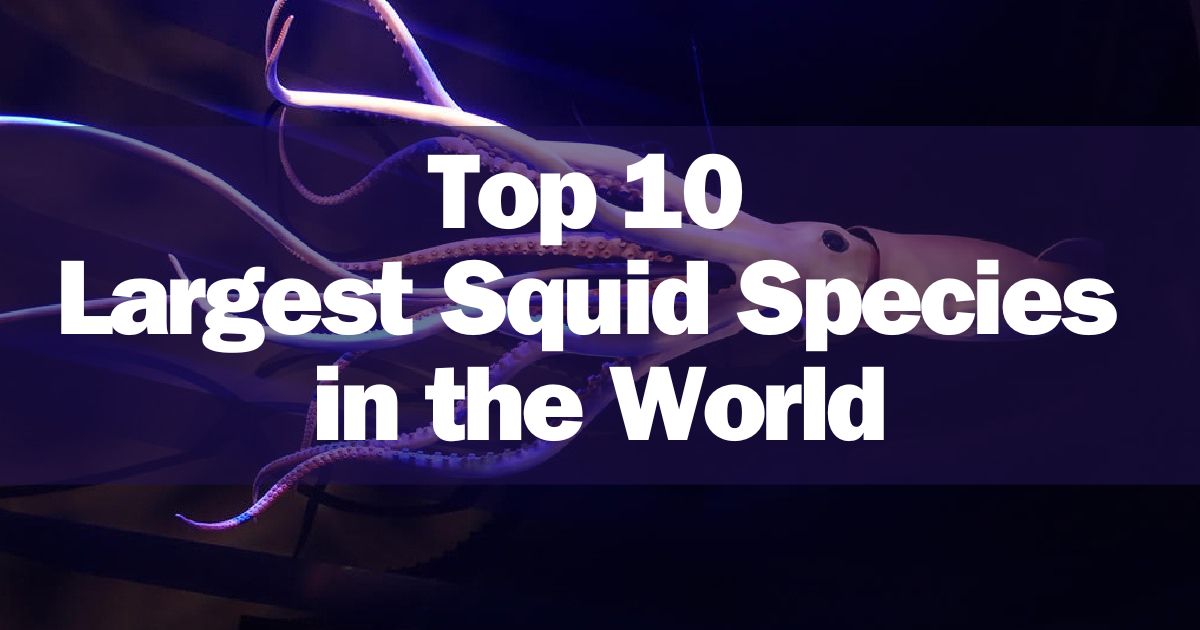People have always been interested in squids because of their huge size and strange deep-sea homes. Several squid species are notable for their size and unique adaptations to deep ocean habitats. This page examines a few of the largest and especially intriguing squid species, where they live, essential traits, and interactions with oceanic titans like sperm whales.
10. Lycoteuthis springeri
- Mantle Size: 25-35 cm
- Location: Deep oceans worldwide
- Key Features: Bioluminescent organs, small size, widely distributed
Lycoteuthis springeri is a small but widespread squid species found in deep oceans across the globe. With a mantle length of 25-35 cm, it may not be as large as the giant squids or colossal squids, but its bioluminescent organs make it a remarkable sight in the pitch-black depths. These organs, located along its mantle, produce light that helps it in communication and hunting.
This species is an excellent example of how even smaller squid species have evolved to thrive in the deep ocean. Despite its size, Lycoteuthis springeri is a skilled hunter, using its light-producing organs to attract prey. Its widespread presence in the world’s oceans makes it an important part of the marine food chain, interacting with various predators, including sperm whales.
9. Leachia Antarctica
- Mantle Size: 30-40 cm
- Location: Antarctic waters
- Key Features: Transparent body, gelatinous texture
Leachia Antarctica is another squid species that calls the Southern Ocean its home. It has a 30-40 cm mantle yet is just as intriguing as its larger relatives. In its dark ecological home, this squid seems ethereal due to its nearly translucent carapace.
Leachia Antarctica’s invisibility makes it nearly undetectable to both prey and predators. This species lives in the deep waters and floats on its gelatinous body. Scientists and marine life researchers are fascinated by its distinctive traits and significance in the ocean’s ecology.
8. Robust Clubhook Squid
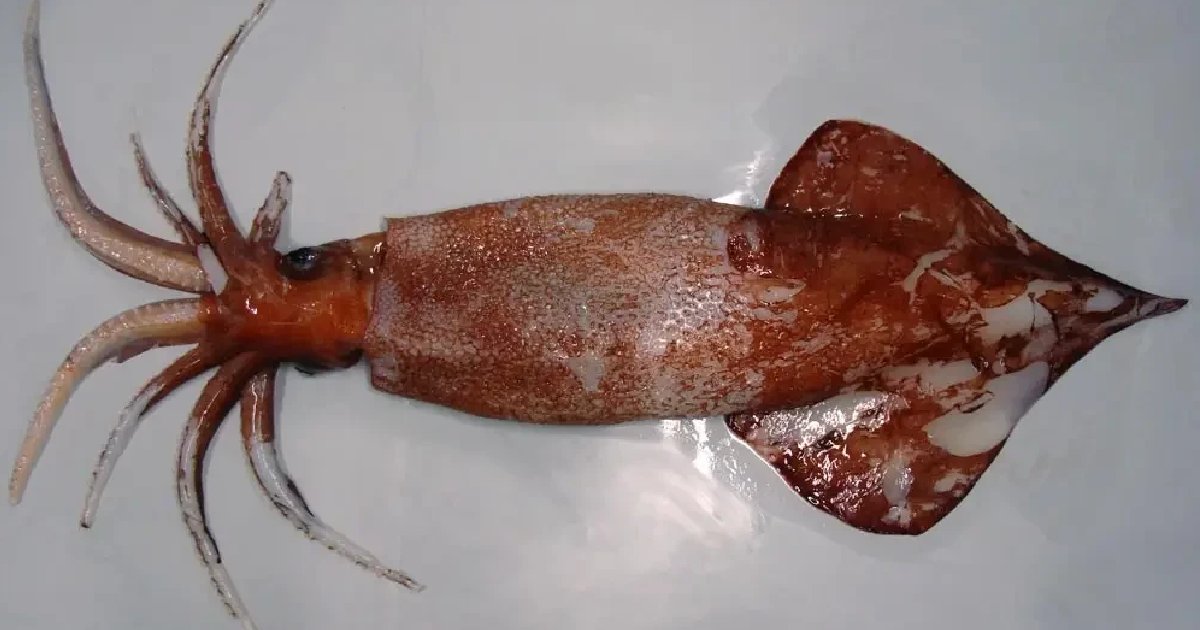
- Mantle Size: Up to 1 meter
- Location: Deep-sea environments, worldwide
- Key Features: Strong club-shaped arms, deep-sea predator
The Robust Clubhook squid is a deep-sea predator with a mantle length of up to 1 meter. This species is named for its strong, club-shaped arms, which it uses to capture prey in the deep ocean. Like many other squid species, it is elusive and rarely seen, making it a subject of ongoing scientific interest.
This squid is found in deep-sea environments worldwide, where it hunts fish and other small marine animals. Its powerful arms and deep-ocean habitat make it a formidable predator, adapted to life in one of the most challenging environments on Earth. Scientists continue to study the Robust Clubhook squid to learn more about its role in the marine ecosystem.
7. Humboldt Squid
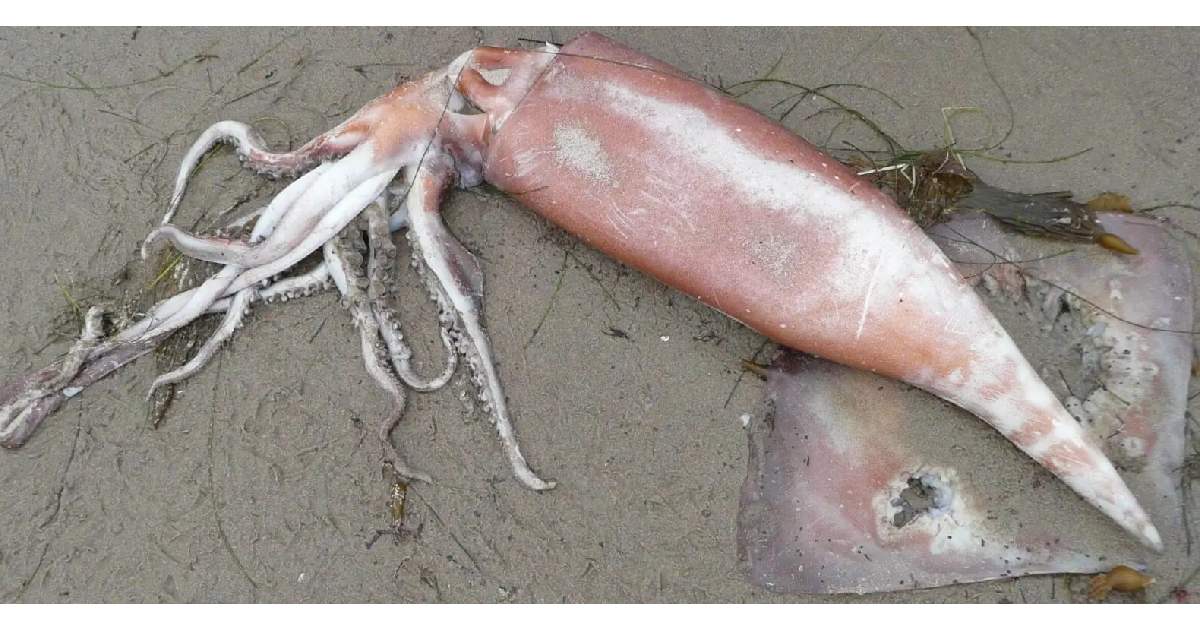
- Mantle Size: Up to 1.5 meters
- Location: Eastern Pacific Ocean
- Key Features: Social hunting tactics
The Humboldt squid, or “red devil,” has become one of the most deadly. In the Eastern Pacific Ocean, this particular species can grow to 1.5 meters. Its crimson hue and ferocious hunting style make it despised by anglers and marine researchers.
Humboldt squids forage in shoals and are enthusiastic. They swiftly seize and disintegrate prey using their muscular tentacles and keen beaks. Though terrifying, these squids control the abundance of fish in the natural habitat.
6. Dana Octopus Squid
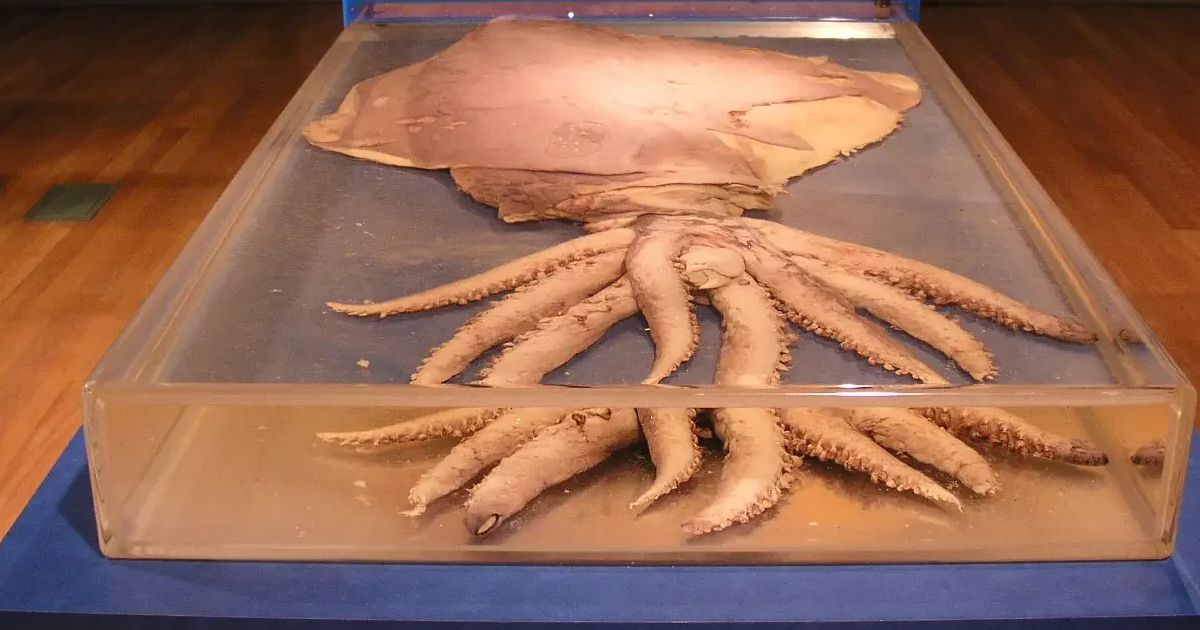
- Mantle Size: Up to 1.5 meters
- Location: Worldwide, deep-sea habitats
- Key Features: Large size, bioluminescent abilities, deep-sea predator
More than a mantle that extends up to 1.5 meters, the Dana Octopus squid represents one of the bigger squid types. It inhabits deep seas all over the world and makes use of its bioluminescence to locate food and connect to other squids that reside there. This type of animal is a skilled hunter which is known for being swift and mobile in the water.
Dana Octopus squids are very good at living in the depths of the ocean, where they have to worry about sperm whales as their primary enemies. Oceanographers find them to be one of the most fascinating kinds of squid because of their massive size and bioluminescence. While they are called octopuses, they are not directly related to them. However, because they live in the deep ocean, they have many traits in common.
5. Batoteuthis scolops
- Mantle Size: Up to 2 meters
- Location: Southern Ocean
- Key Features: Large eyes, bioluminescent capabilities, deep ocean habitat
Although not as well known, Batoteuthis scolops is a very interesting species of squid. Among the largest squid species, this Southern Ocean species can exceed 2 meters in length. Its enormous vision helped it survive in the deepest, dark oceans so it could detect even the smallest lights.
Like many squid species, this one uses bioluminescence for communication, hunting, and avoiding predators in the deep oceans. Its size and distinctive traits set Batoteuthis scolops apart from other enigmatic animals in the deep ocean. Similar to the colossal squid, this squid may have adapted to the harsh Southern Ocean environment.
4. Monster Squid
- Mantle Size: Over 2 meters
- Location: Deep oceans, Southern Hemisphere
- Key Features: Massive size, powerful tentacles, deep-sea predator
The phrase “monster squid” refers to huge and gigantic squids. Their bodies are huge and strong, many of them exceeding over 2 meters in mantle length. The suckers on their strong tentacles help them catch and retain targets.
Monster squids hunt fishes and other squids in the deepest oceans, especially in the Southern Hemisphere. Traditional marine customs depict them as dangerous sea creatures due to their enormous stature and carnivorous tendencies. These deep-ocean squid are exceptionally skilled predators that are vital to the marine food system.
3. Bigfin Squid
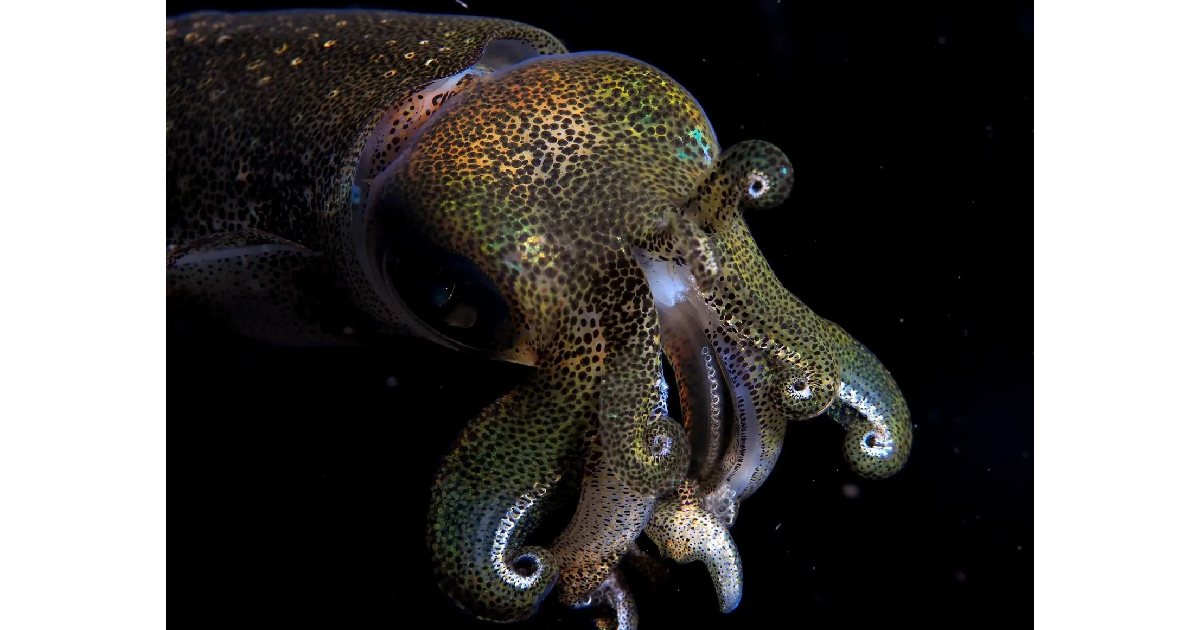
- Mantle Size: Up to 7 meters (including arms)
- Location: Deep sea, worldwide
- Key Features: Extremely long arms, elusive nature, deep-sea habitat
Bigfin (Magnapinna) squids remain the most mysterious. This squid ranks as one of the largest ever, with a mantle up to 7 meters and lengthy trailing limbs. Its elusiveness and uniqueness make this species intriguing and mysterious.
The Bigfin squid utilizes its immense arms to catch prey in pitch black in deep seas all over the globe. Its strange look and deep-ocean setting have sparked many theories about its way of life and conduct. Researchers examine this enormous squid to learn more about its function in the underwater ecology.
2. Giant Squid
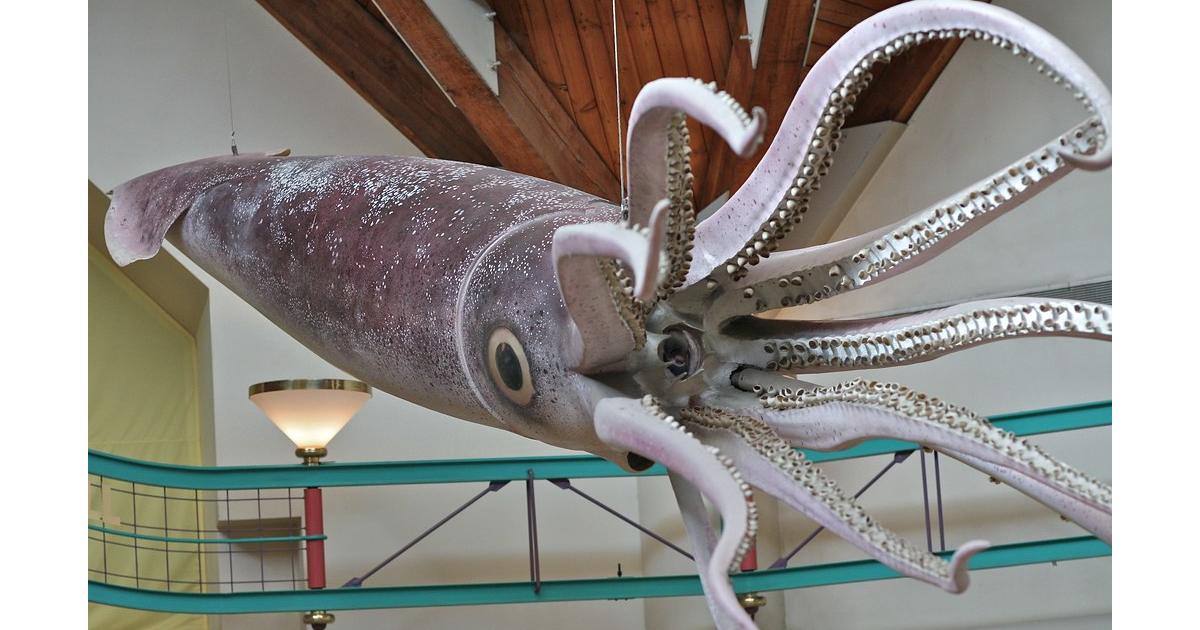
- Mantle Size: Up to 12 meters
- Location: Worldwide, deep oceans
- Key Features: giant squid beaks, deep-sea habitat
The Architeuthis dux, the gigantic squid, maybe the most noted. The mantle of this squid is as tall as 12 meters across, making it among the biggest discovered anywhere. Giant squids can be found in the deepest oceans on the planet.
They acquire prey and other squid species with their long arms. For many years, narratives and books have made giant squids into scary sea creatures. A lot of what the developers know about them originates from dead giant squid that have been found lifeless in sperm whale bellies or on land. The giant squid is one of the most interesting deep-sea animals because it is incredibly rare to see a live giant squid sighting.
1. Colossal Squid
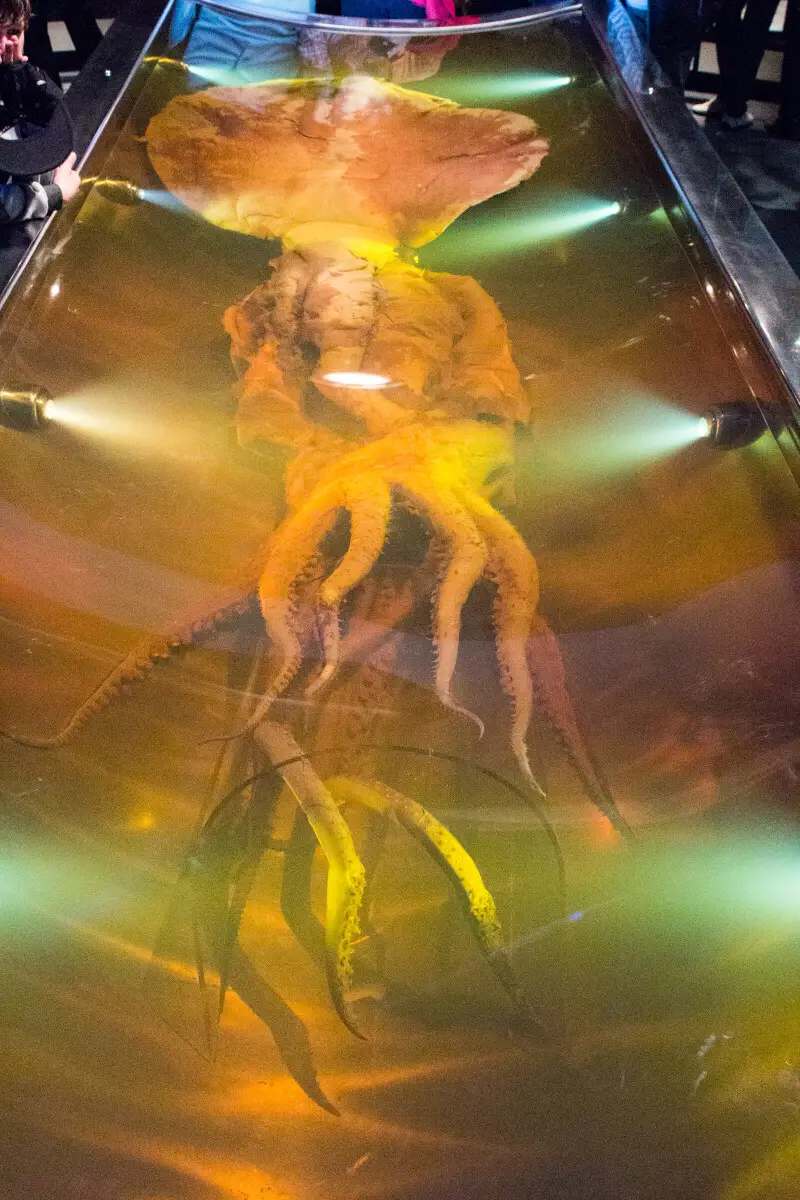
- Mantle Size: Up to 14 meters
- Location: Southern Ocean
- Key Features: largest eyes in the animal kingdom, deep-sea predator
The largest species of squid that science is aware of is the colossal squid (Mesonychoteuthis hamiltoni), which has a mantle size that can grow to a maximum of 14 meters. It hunts food in the Southern Ocean with its enormous bulk and powerful tentacles. Colossal squids can see in dark waters because they possess the most substantial eyes.
This species appears like the giant squid but is larger and stronger. Sperm whales eat gigantic squids, and several beaks have been discovered in their stomachs, detailing dramatic deep-sea confrontations. The giant squid’s size and deep-sea home render it one of the ocean’s most impressive species.
Conclusion
Squids’ worlds are as huge and enigmatic as their oceans. These creatures, from the mysterious Bigfin to the huge and colossal, fascinate scientists and the public. Their size, adaptability, and relationships with other marine giants like sperm whales make them intriguing species. Research on these extraordinary deep-sea predators and their function in the ocean’s intricate ecology can only lead to further knowledge.
Frequently Asked Questions (FAQs)
What is the biggest species of squid?
The colossal squid (Mesonychoteuthis hamiltoni) is the largest squid species known to science. It can reach a mantle length of up to 14 meters, making it even larger than the giant squid. Found primarily in the Southern Ocean, the colossal squid is a formidable deep-sea predator equipped with the largest eyes in the animal kingdom.
Why is the colossal squid so big?
The colossal squid’s enormous size is likely an adaptation to the extreme conditions of the deep ocean. Larger body sizes may offer advantages like enhanced mobility, greater strength for capturing prey, and the ability to survive in the cold, high-pressure environment of the Southern Ocean. Its size also helps it compete with other deep-sea predators.
Are colossal squids extinct?
No, colossal squids are not extinct. Although they are elusive and rarely seen, they still inhabit the deep waters of the Southern Ocean. The rarity of sightings is due to their deep-sea habitat, which makes encounters with humans uncommon. However, specimens have been found, providing evidence that they are still very much alive.
What is the largest squid alive today?
The largest squid alive today is the colossal squid (Mesonychoteuthis hamiltoni). With a mantle length of up to 14 meters, it surpasses even the giant squid in size. Found in the deep waters of the Southern Ocean, the colossal squid is the most massive squid species known to science, boasting enormous eyes and powerful tentacles.
Do giant squids exist?
Yes, giant squids (Architeuthis dux) do exist. They are one of the largest squid species, reaching up to 12 meters in length. Although they are elusive and rarely seen alive, giant squid specimens have been found in deep oceans worldwide. Their existence has been confirmed through encounters, dead specimens, and remains found in sperm whale stomachs.

